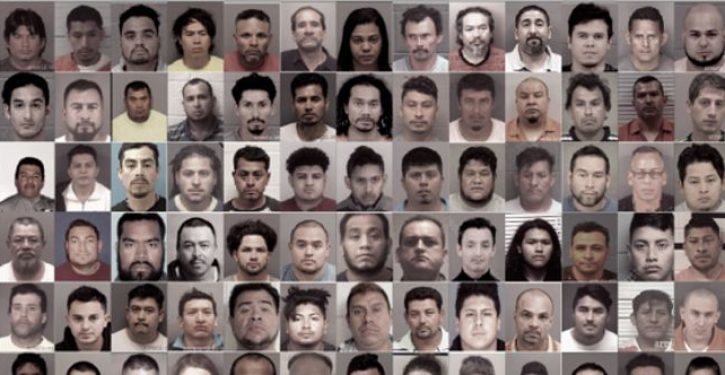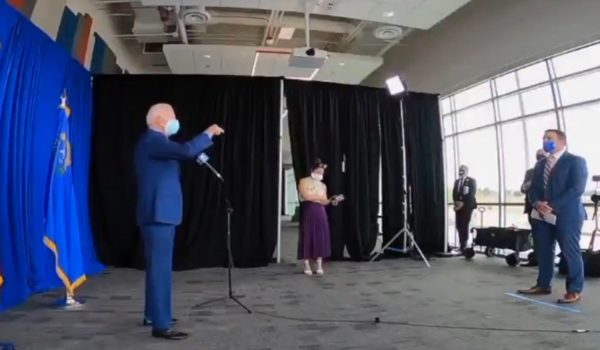
The crime rate varies a lot between different ethnic groups. But the Washington Post recently left its readers with a false impression to the contrary. It managed to ignore crime statistics and surveys showing that a disproportionate number of criminals are black, to imply that “black people” do not “commit more crimes than other racial or ethnic groups.”
In an October 23 article, the Washington Post described how blacks were arrested in Prince George’s County, Maryland at a higher rate than whites. It then suggested this was solely due to systemic racism:
“The authors say in the study that this disproportionate rate does not mean that Black people commit more crimes than other racial or ethnic groups, but that communities of color have been historically over-policed, are disadvantaged by the racial bias of individual officers, and have been underserved by government policies and community resources.”
Will this presidential election be the most important in American history?
But researchers — even many progressive academics — have long admitted that the crime rate is higher in the black community. As the American Journal of Preventive Medicine has noted, “Homicide rates have consistently been at least ten times higher for blacks aged 10-34 years compared with whites in the same age group between 1995 and 2015.”
As law professor Gail Heriot notes, “The authors of a new report featured in Washington Post would have us to believe that arrests of African Americans are higher than for other races mainly because cops are biased and African American neighborhoods have historically been ‘over-policed.'” But this is “not so,” and the higher black arrest rate is not “primarily the fault” of the police, says Professor Heriot.
The Supreme Court has observed that crime rates do differ by race. Crimes and infractions are not evenly distributed across racial groups, as the Supreme Court noted in United States v. Armstrong (1996). As that 8-to-1 Supreme Court ruling noted, there is no legal “presumption that people of all races commit all types of crimes” at the same rate, since such a presumption is “contradicted by” real world data, in which “more than 90% of” convicted cocaine traffickers “were black” in 1994, and “93.4% of convicted LSD dealers were white.”
According to a researcher at the Manhattan Institute, “the homicide rate among males between the ages of 14 and 17 is nearly ten times higher for blacks than for whites and Hispanics combined.”
Racial differences in the crime rate are not limited to serious crimes like murder. They also include misdemeanors like simple assault — including getting into a fight. As education policy expert Michael Petrilli notes, “In 2015, high school students were asked if they had been in a fight on school property at any time in the past 12 months. African American students were 2.2 times more likely to say yes than white students — 11.4 percent to 5.2 percent.” The same is true for surveys of adult crime victims. Victims disproportionately describe black-on-black crime.
Crime is heavily black-on-black, and black victims of violent crimes disproportionately identify their assailant as black. As the Bureau of Justice Statistics explains, most crimes are committed mostly between members of the same racial group, and this is true for “rape or sexual assault,” “simple assault,” “aggravated assault,” and indeed, “all types of violent crime except robbery,” which is disproportionately committed by blacks against non-blacks. (See Race and Hispanic Origin of Victims and Offenders, 2012-2015.)
Similarly, the liberal fact-checker PolitiFact points out that between 2010 and 2013, “92 percent of blacks who were murdered were killed by other blacks.”
The FBI’s Uniform Crime Reports show that 47 percent of murderers in 2018 were black, even though blacks make up only 13 percent of the U.S. population. Similarly, 43.7 percent of all rapists in state prisons were black, according to a 1997 report by the Bureau of Justice Statistics.
So there is overwhelming statistical evidence of racial differences in crime rates. But even overwhelming evidence is sometimes ignored when the truth is politically taboo. As Professor Heriot notes, “The U.S. Commission on Civil Rights recently made the” erroneous “claim that students of all races misbehave in school at equal rates, and that (by implication) disproportionate discipline rates should be blamed on biased teachers. It was easily proven false,” based on student surveys and statistics, yet the progressive-dominated Commission has yet to retract its erroneous claim, even after the black civil-rights commissioner Peter Kirsanow pointed out that it was false.
As noted above, black students themselves admit to misbehaving at higher rates, in student surveys. For example, the percentage of black students who admit to getting into fights on school grounds is more than twice the percentage of white students who do so, according to survey data from the National Center for Education Statistics.
As Professor Heriot notes, it is wrong to claim that higher black arrest rates or school suspension rates are “primarily the fault of overzealous police and teachers.” But such claims are often left unquestioned in progressive media. That is especially true in the past year, since the tragic death of George Floyd. Since then, many people have lost their jobs for not being sufficiently “antiracist,” or questioning broad claims of racism. (The Future of Capitalism web site contains a list of people who have lost their jobs, most of them non-racist people).
As a result, it has become risky to even discuss research that shows an absence of racial bias by the police. For example, a college vice president was forced to resign his position for publicly citing an academic study finding that police shootings were not systemically racist. Due to such reprisals, researchers remain silent rather than taking issue with false claims in the media about bias in the criminal justice system.




